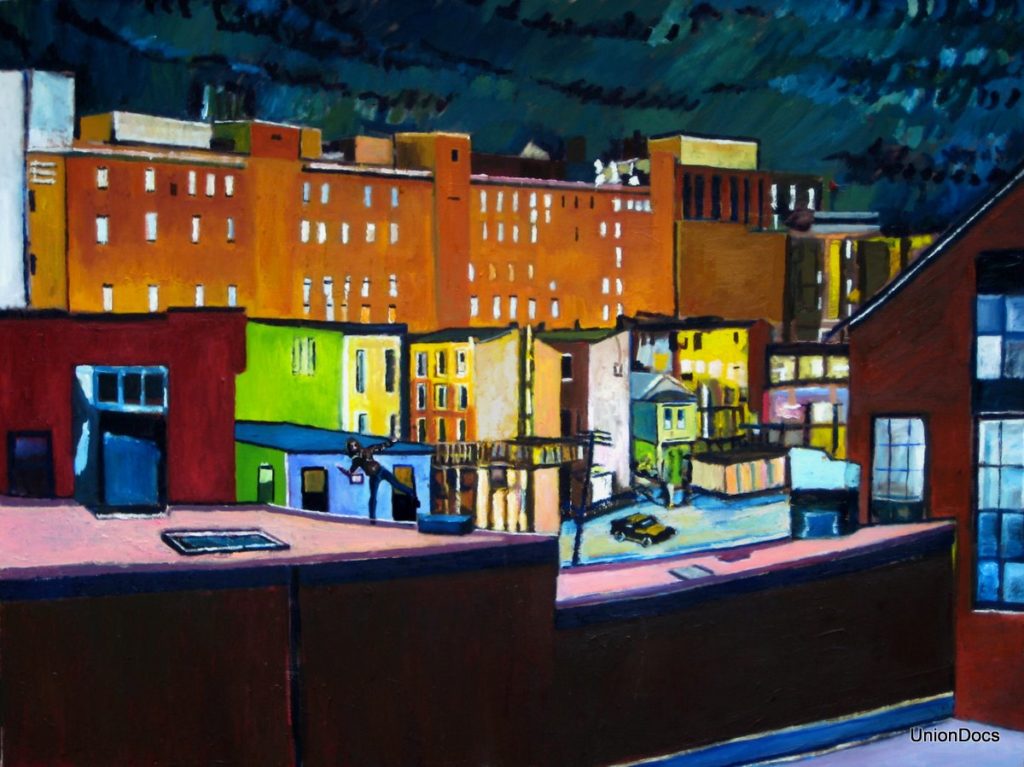The paintings in On a Precipice explore the uncertainty of the times, and the place of the individual in these times. Whether toeing the edge, dancing in the uncertainty, just trying to stay balanced, or triumphantly looking down from the top, the works are a contemplation of the individual, adjusting and readjusting to a complex world that is changing underneath us.
Baltimore artist Teddy Johnson received his BFA in painting from the Maryland Institute College of Art, his MFA in drawing and painting from the University of Georgia, and studied painting and Italian Art for a year in Cortona, Italy. His paintings can be found in private collections throughout the United States and have been exhibited publicly in the United States, Italy, and Korea. He currently teaches Art at both Anne Arundel Community College in Arnold, MD and Shepherd University in Shepherdstown, WV. His paintings play with the traditions of Western narrative painting as a forum to explore human psychology, color, and contemporary culture.
The colorful scenes of city rooftops seem to belong more to the world of Technicolor than real life, and the subject of the paintings themselves—figures balanced precariously atop ledges and roof tops—calls to mind the police chase that left James Stewart dangling from a San Francisco high-rise.
Of course, a comparison to the painter so often linked to the cinematic Master of Suspense, Edward Hopper, seems apt, but Johnson appears only to share a predilection for everyday urban life and vivid colors with the mid-century artist. Instead of mystery or apprehension, Johnson engenders his figures with a sense of elation that makes them capable of standing on one foot on the thin pinnacle of a roof. The energy and literal buoyancy of these figures is especially interesting considering that the scenes are most likely borrowed from the artist’s place of residence, Baltimore, whose traditionally industry-based economy has recently undergone dramatic changes that include rising crime. But as Johnson’s figures suggest, a call for optimism could be in order.
Rebecca Brantley, Athens Flagpole magazine







